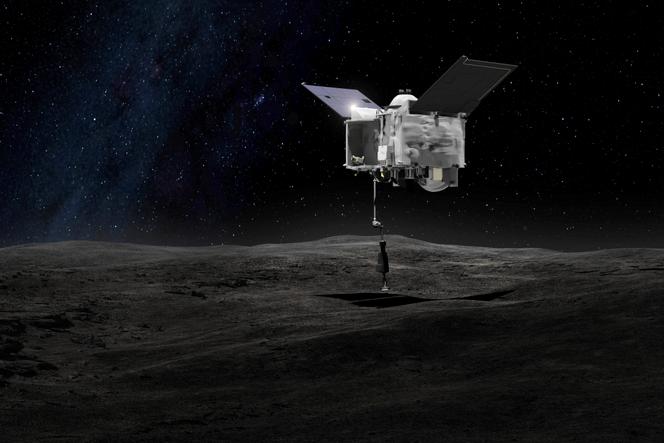


Covering over 6 billion kilometers in space during its seven-year voyage, Osiris-Rex closely followed and examined the Bennu asteroid, collecting 250 grams of samples from it back in 2020. On Sunday, September 24, NASA's spacecraft flew by Earth in order to release a small capsule containing its precious cargo, which landed shortly before 5 pm (Paris time) in a vast 9,300 km2 military zone in the Utah desert.
We've spotted the #OSIRISREx capsule on the ground, the parachute has separated, and the helicopters are arriving at the site. We're ready to recover that sample! pic.twitter.com/ZmPyb8fyrR
— NASA Solar System (@NASASolarSystem) September 24, 2023
It was a critical maneuver, involving the smooth landing of an object originally traveling at 44,500 km/h. It all began at 12:42 pm, when Osiris-Rex, then just over 100,000 km above Earth, released the 50-kilogram capsule into space. Four hours later, it began its entry into Earth's atmosphere. Friction with the air raised the temperature of its protective shield to around 2,800°C.
At an altitude of 31 km, a first parachute, 80 cm in diameter, sprang from the back of the capsule to stabilize it. A few minutes later, a second parachute, 7.3 m in diameter, took over for the final 1,500 m of descent. The entire journey was monitored by radar and cameras to help the recovery team find the capsule. The final destination for the sample will be the Lyndon B. Johnson Space Center in Houston, Texas, home to NASA's division in charge of foreign materials, such as moon rocks from the Apollo missions, solar wind particles and meteorites.
Samples taken from asteroids are invaluable to astronomers. As Patrick Michel, research director at the French National Center for Scientific Research (CNRS) at the Côte d'Azur Observatory and member of the Osiris-Rex scientific team, explained to Le Monde in 2019, "asteroids are the remains of the bricks that built the planets." In other words, they are remnants of the formation of the solar system. Unlike planets, which have undergone extensive heating and chemical metamorphosis, asteroids are only slightly transformed, preserving in a way the memory of these primitive bricks.
Although not the first in situ sample of its kind, the Osiris-Rex shipment is likely to be the largest ever reported. The very first attempt, led by Japan with the Hayabusa spacecraft, ended in semi-failure. Due to a series of problems, only 1,500 microscopic grains from the Itokawa asteroid were returned to Earth in 2010. On the other hand, its "daughter mission" Hayabusa2 was a complete success, collecting just over five grams of material from the asteroid Ryugu. Far more than its initial target of a fraction of a gram, but far less than Osiris-Rex's estimated 250 grams. Not all of the material will be handed over to the researchers: 70% of the sample will be saved for later, until analytical techniques have progressed.
You have 6.81% of this article left to read. The rest is for subscribers only.
